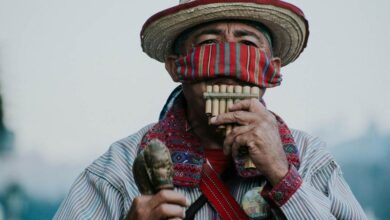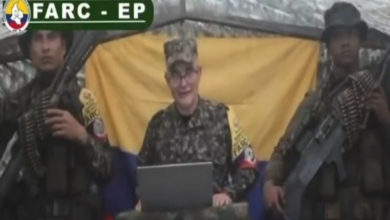San Javier, the Russian town in Uruguay
Fleeing the persecution of Tsar Nicholas II, the religious community of 'New Israel' took refuge in the Latin American country.

Monument of Russian dolls to commemorate the Russian roots in San Javier, Freedom Square. / Photo: wikimedia-Louis Lalaguna
LatinAmerican Post | Alberto Castaño
Listen to this article
Leer en español: San Javier, el pueblo Ruso en Uruguay
We could talk about San Javier or Сан-Хавьер, as the name of this picturesque town is translated into Russian, the second language that its inhabitants learn. But to know why you get to baptize a people in Russian and why this is the second language spoken by citizens residing there, we have to go back to the times of Tsar Nicholas II in that extinct Russia that would disappear with the birth of the Soviet Union.
In the early twentieth century, the religious community of "New Israel" undertook the flight of their native Russia for the persecution against them undertaken by the last Tsar of the Asian colossus who prevented them from professing their faith freely. This is how Vasili Lubkov took his belongings and, next to him, about 300 families fled their native Russia to find peace and freedom to profess their faith more than 13 thousand kilometers away.
It was in the least densely populated country in Latin America where they found the refuge they were looking for, a territory that received them with open arms and on July 27, 1913 the town of San Javier was founded as part of the land occupation policy which the government offered at the time through the Minister of Development and Agriculture.
The minister of this portfolio, the lawyer and politician, José Espalter, welcomed the 300 families who established this town in the department of Río Negro on the banks of the Uruguay River.
It is said that those Russian settlers called their people San Javier in homage to José Espalter because he, the one that opened the doors for them to have a new life, had lost a little son named Javier and in gratitude, they called the town as the departed child. Other theories say that the name came from the Jesuit settlements in colonial times as a tribute to the priest born in Navarra, Spain and died on Shangchuan Island, China, the canonized San Francisco Javier.
In its beginnings, San Javier, functioned as a city-state, with its own rules and laws and the government was headed by the head of the religious sect but it would only be 13 years since the arrival of the Russian immigrant colony, before the Uruguayan government will withdraw Lubkov from the settlement government and grant those lands authority to the Mortgage Bank of Uruguay and subsequently to the National Colonization Institute.
Also read: Why you must experience St. Barts Villas at least once in your lifetime
This forced the head of the sect to leave Uruguay with about 50 families with an unknown destination, some say without certainty that their final destination was native Russia again.
It was those from the Asian continent who introduced the sunflower seed to Uruguay, until those times unknown in those lands. And with its plantations, the construction of the first mill for the extraction of the precious oil. This activity, together with agriculture and livestock, would become the basis of the economy of the community.
From the passage of their lands to the Mortgage Bank of Uruguay, several disputes occurred that concentrated the life and the most important events of the daily life of San Javier until in 1953 the dispute with the expropriation of lands and the delivery of these were settled to those who worked them.
They were years of calm and harmony until the wave of dictatorships in Latin America managed to infect the Oriental Republic of Uruguay and in 1973 a civic-military dictatorship was established that oppressed everything that smelled of communism. Although Russian immigrants were oblivious to the communism that was established in their native Russia with the creation of the Soviet Union, just a few years after their departure, the military suspected the inhabitants of San Javier so they were brutally persecuted.
Read also: Trump says goodbye to the Paris Agreement
The dictatorship persecuted immigrants of Russian descent without mercy, their books and traditional costumes were burned, they were forbidden to speak in Russian and one of the last crimes recorded by the dictatorship in the country was the torture of doctor Vladimir Roslik in battalion n.º 9 of Fray Bentos that ended with his death on April 16, 1984.
When democracy came again and the Uruguayans were able to let go of the military yoke and breathe again, so did those whose ancestors were Russian, the Máximo Gorki cultural center reopened its doors and that has been the epicenter of the cultural rebirth of culture Russian nestled in the middle of Uruguay.
At present, Russian culture is celebrated, language is taught, traditions are practiced and an atmosphere of deep pride is felt for the roots that support the foundations of their peaceful life based on the work of the land and attention to tourists who are not surprised that 90% of the inhabitants of this town in Uruguay are of Russian origin.





